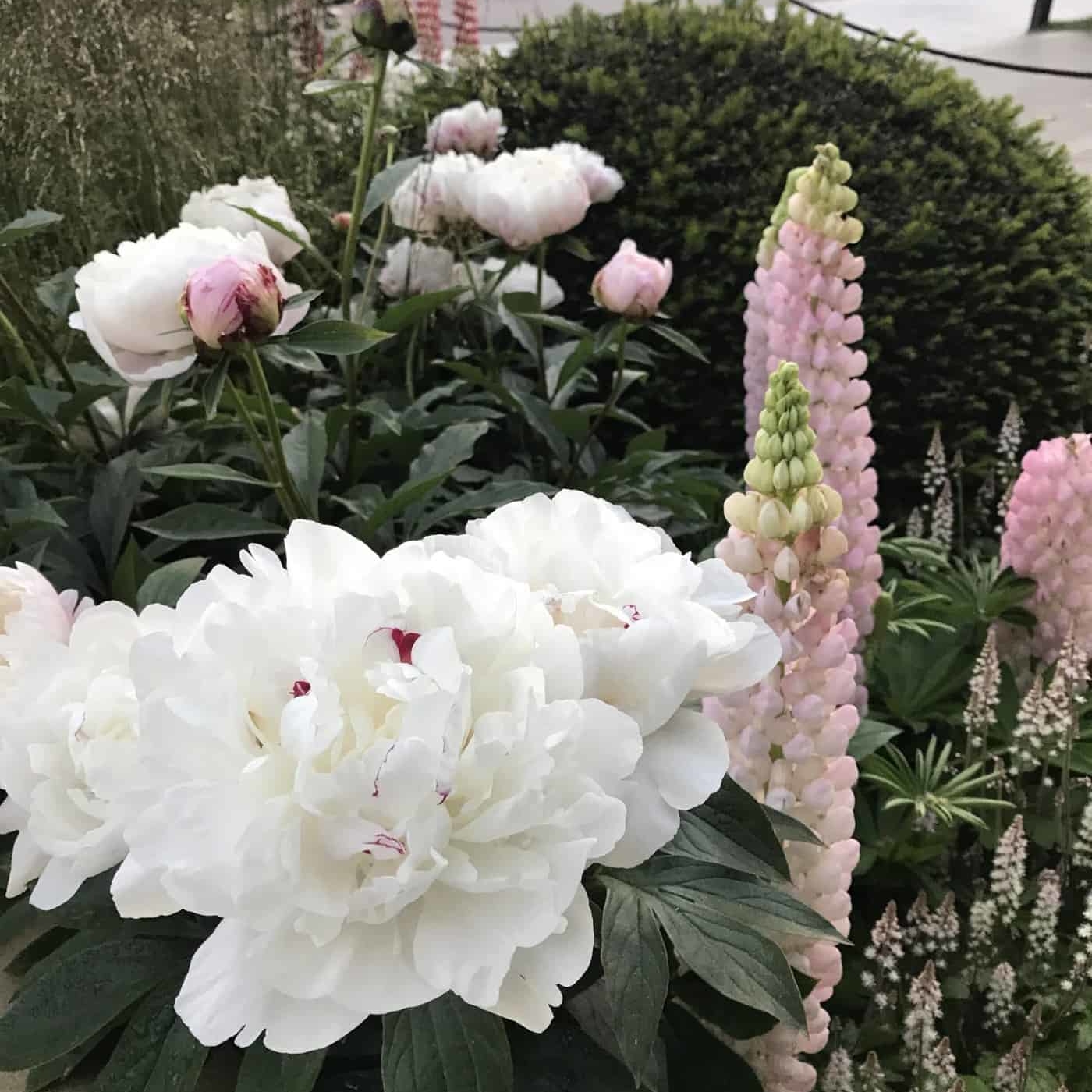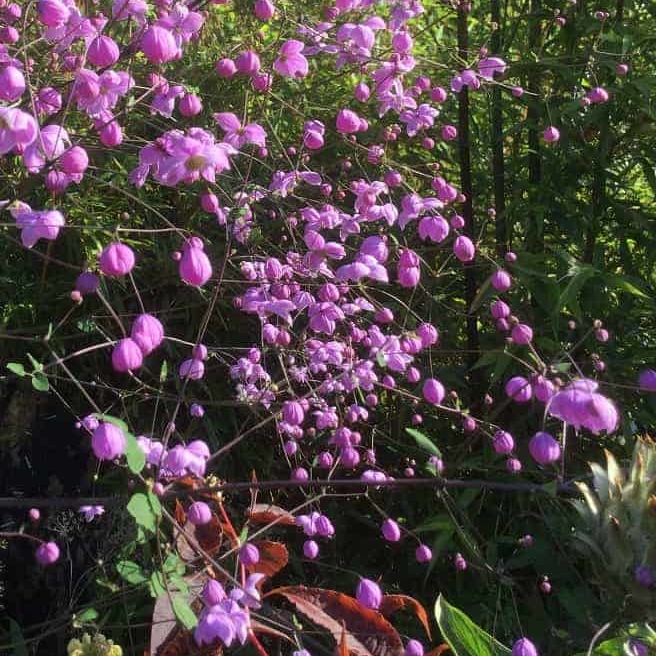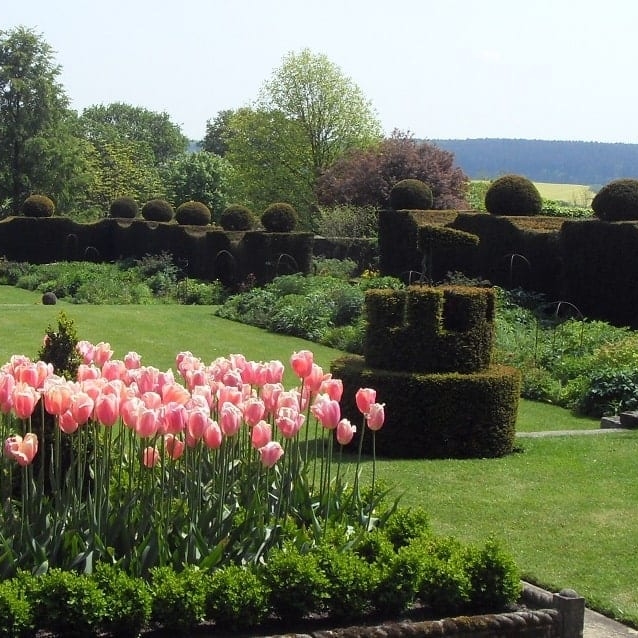Gardens come in all shapes and sizes, and their soil varies in many ways. It’s not uncommon to encounter a boggy area. This can be due to its position below a slope, a high water table or even the proximity of a watercourse. We’re listing our top 10 plants for waterlogged ground, to help you stop seeing this as a problem spot and begin filling it with attractive foliage and flowers.
We’re only dealing here with 10 plants we love for boggy areas. For more information on water tables and working with wet ground, visit our article here. If you’d like to know more about your soil structure, check out our page on soil types too.
(1) Astilbe
Hailing from East Asia, these plants are most notable for their clouds of flowers, drifting in the air. They look very impressive en masse. Astilbe x arendsii ‘Fanal’ gives hits of vivid pink. For clear white flowering, consider A. x arendsii ‘Brautschleier’; it’ll sing out in shadier spots.
(2) Athyrium
This is a genus of damp-loving shade ferns, and a specimen worth checking out is A. filix-femina ‘Dre’s Dagger’. Its fronds appear less heavy due to the slender, fork-tipped pinnae along them, lending it an ethereal uniqueness.
(3) Candelabra primulas
This common name covers a range of primula species, described after the distinctive arrangement of flowers. You can choose from among many colours, often bright. Primula japonica ‘Postford White’ bears snow white rings of blossom. On the other hand, P. japonica ‘Miller’s Crimson’ is less coy in its red colouring. Both can reach 90cm in height given the right conditions.
(4) Hostas
Another genus with a wide range of varieties to choose from. Hostas are a favourite for damper, shadier areas. Many cultivars have been bred to tailor for many tastes. Simpler ones have plain green leaves, while others are variegated and outlandish (for example, lime-green centres with blue margins). Hosta ‘Purple Heart’ is a more compact cultivar in paler green. It’s leafstalks are purple, and it displays pink-lavender flowers.
(5) Hydrangea paniculata
The perfect shrub for the damp garden, cultivars’ all bear pale flowers. H. paniculata ‘Limelight’ is an old reliable of ours. Its clusters of flowers are green-white and emerge from August. They’re tinged with pink as they fade away. For a splash more pizzazz later in the year, consider H. paniculata ‘Wim’s Red’; the white flowers become a magnificent crimson by their end.
(6) Ligularia ‘The Rocket’
This Ligularia reaches up to 1.8m in height, with a spread of 1m or so. Its dark leaves lead up to even blacker stems. These bear the rich yellow flowers, opening in July and August.
(7) Persicaria
A clump-forming, spreading genus with the greenest elliptic leaves. P. amplexicaulis ‘Firetail’ is worth planting in a larger space. It’s taller and its plum-coloured flowers sway wonderfully in the breeze. A smaller species is P. bistorta ‘Superba’, whose flowers are a softer candyfloss pink tint.
(8) Rodgersia
Rodgersias look like dwarf horse chestnuts spreading to cover the ground. Frothy flowers arise in July and August as an additional feature. The green leaves of R. aesculifolia act as a great foil to ferns and other plants. Alternatively, try out Rodgersia ‘Bronze Peacock’. This will add a metallic architecture to your garden.
(9) Salix alba ‘Vitellina’
Named the “Golden Willow” and for good reason: its young stems are brilliantly yellow-orange. It requires regular coppicing to ensure this glowing display and restrict its growth. To enjoy the yellow-green catkins in early spring, make sure you only coppice some stems every other year.
(10) Sanguisorba officinalis
More often considered part of a prairie scheme thanks to its stature and swaying, it does benefit from moist ground. It throws up tight balls of deep red flowers, perched on long pale stalks.
Kevin Gelder
Kevin joined Bestall & Co in late 2017 and brought a range of skills with him from a varied background. He gained a degree in French and Italian from Lancaster University in 2009 before successfully completing a PGCE at the University of Sheffield in 2011. He built on his communication skills through secondary language teaching, before working in healthcare administration.
Ultimately though it was his passion for plants and gardening which brought him to Bestall & Co as a member of the planting team, and although he's now moved back to an office based role, the articles he wrote whilst he was still with us live on.



